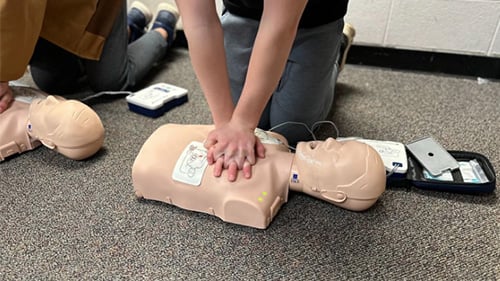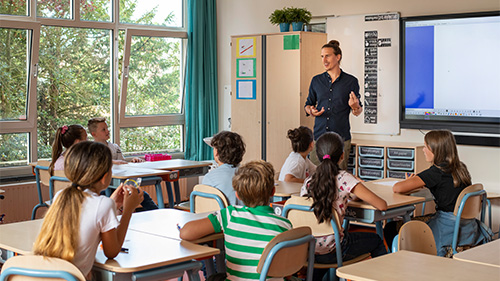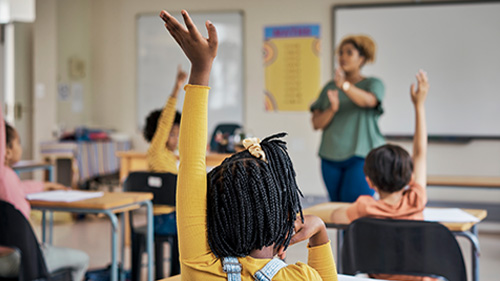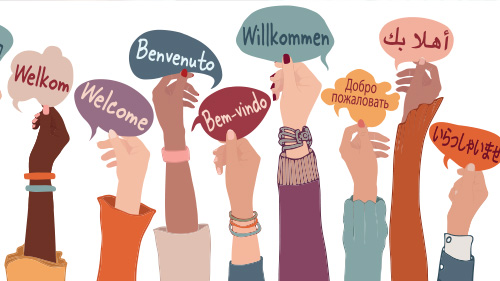Rhetoric Meets Remedy: Audio and Video Tools in a Collaborative Classroom
In the first blog post of the Rhetoric Meets Remedy series, I discussed the importance of teaching for transfer. Teaching for transfer is vital...
AP & Honors Mathematics
Explore Wiley titles to support both AP and Honors mathematics instruction.
Literacy Skills & Intensive Reading
Connections: Reading – Grades 6–12
Empower student success with a proven intensive reading program that develops strong reading skills in striving readers.
Drama, Speech & Debate
Basic Drama Projects 10th Edition
Build students’ confidence and competence with comprehensive, project-based theatre instruction.
Literature
Connections: Literature
Support learners as they study dynamic, relevant texts and bring the richness of diverse voices to students through literature.
Literature & Thought
Develop critical thinking, reading, and writing across literacy themes, genres, historical eras, and current events.
Language Arts
Vocabu-Lit® – Grades 6–12
Help students build word power using high-quality contemporary and classic literature, nonfiction, essays, and more.
Connections: Writing & Language
Help students develop grammar, usage, mechanics, vocabulary, spelling, and writing and editing skills.
Reading/English Language Arts
Measuring Up to the English Language Arts Standards
Incorporate standards-driven teaching strategies to complement your ELA curriculum.
English Language Learners
Measuring Up for English Language Learners
Incorporate research-based best practices for ELLs with an approach that includes a focus on language acquisition strategies.
Mathematics
Measuring Up to the Mathematics Standards
Incorporate standards-driven teaching strategies to complement your mathematics curriculum.
Foundations
Measuring Up Foundations
Help students master foundational math skills that are critical for students to find academic success.
Science
Measuring Up to the Next Generation Science Standards
Give students comprehensive NGSS coverage while targeting instruction and providing rigorous standards practice.
Assessment
Measuring Up Live
Deliver innovative assessment and practice technology designed to offer data-driven instructional support.
For a better website experience, please confirm you are in:
As a public educator, one of the most vital things that I try to get my students to understand is how all the information they learn works together and integrates into the real world outside of the classroom. For many students, this is hard for them to grasp because of how our schools are structured - they study math in algebra class and science in biology class, etc. Students do not always see the integration of topics in action, let alone discuss the implications of the content in their own lives.
But school doesn’t have to be that way.
Imagine students leaving your classroom with not just facts, but flexible thinking they can take anywhere. That’s the promise of teaching for transfer - an approach that focuses on helping students apply learned skills to new and unfamiliar situations. It is the difference between knowing content and understanding when and how to use the content. This authentic type of learning allows students to take ownership of their decisions and encourages forward-thinking skills that transfer into the real world settings.
One of my biggest goals as a high school English teacher is to help students see that what we do in class is not about passing a test or getting a good grade; it’s about equipping them with a toolkit they can carry beyond the classroom walls. I am always looking for ways to encourage transfer of learning. The best way I have done this is through collaboration with fellow teachers in other content areas. This past school year, I started small by collaborating with the Health/PE instructor at my school. In the next few blog posts in this series, I will share my collaborative journey, lessons I learned along the way, as well as recommendations and considerations as I explored the process. But in the meantime, if you are wanting to get started, here are a few general guidelines to help.
|
SUGGESTION |
EXAMPLES |
WHY IT HELPS |
|
Make thinking visible |
Have a class conversation using guided, thought-provoking prompts similar to these:
|
It allows learners to articulate their thinking, reflect on their biases, and process the way they perceive information. It also allows them to connect thoughts and contribute to what others are saying. |
|
Anchor with intention |
Instead of just giving the objective(s) for the lessons, take time to discuss how the objectives transfer to the real world. Show students the value in the content they are learning. |
When you anchor your lessons with intention, you are not only utilizing your classroom time effectively, but you are teaching the students to understand that what they learn is important in real world settings. |
|
Connect your content to other disciplines |
Start small. Begin with subjects that make the most sense. For example, if you teach social studies, look for ways to integrate writing and reading. If you teach science, look for ways to integrate math. Collaborate with your grade-level colleagues. Are there topics that can be combined? How can you use larger ‘Essential Questions’ or overarching real-world themes to connect the content? |
As adults, we don’t move through life divided by content areas. For example, a simple trip to the grocery store combines a seamless blend of skills - math, writing, reading, economics, and logic. The same is true for our students. Their lives demand integrated thinking, so why wouldn’t our classrooms reflect that? |
It’s not about covering the content; it’s about cultivating thinkers that can bridge the old and the new.
Supplementary reads:

In the first blog post of the Rhetoric Meets Remedy series, I discussed the importance of teaching for transfer. Teaching for transfer is vital...

Spring is in the air, and school children all across the nation are entering the last leg of the academic year. But before the final bell rings, many...

Summer is almost here. For many, it’s a time to relax and leave schoolwork worries behind. However, by the time school starts up again in the fall,...

Discover how simulations can enhance learning in AP® U.S. Government and Politics. Engage students with hands-on activities like discretionary...

As an educator, there might be one question you dread above all others: “But when am I ever going to use this?”

For most of the past year and half, I have spent most of my waking hours querying or obsessing over querying literary agents for my young adult novel

Okay, real talk without judgement: How often do you arrive at school in the morning only to second-guess your Middle School ELA class routines? You...

Spring is in the air, and school children all across the nation are entering the last leg of the academic year. But before the final bell rings, many...

What happens when we stop seeing language diversity as a barrier and start embracing it as our greatest classroom asset?

Over the course of my career as a middle school ELA teacher, I’ve graded more writing pieces than I can count. I’ve graded late into the night, on...
.jpg)
While most early literacy development occurs in elementary school, teachers in middle and high schools continue shaping students' reading abilities,...

